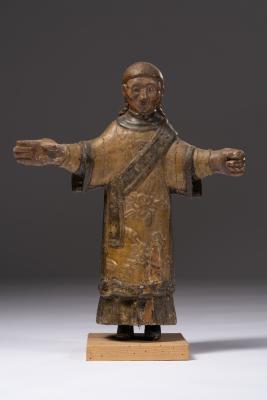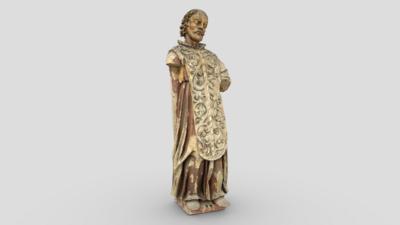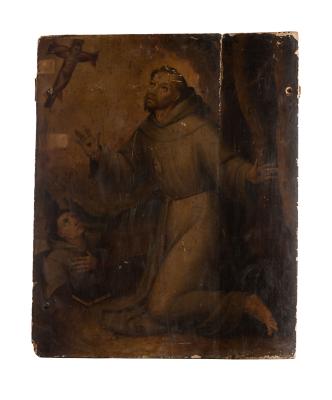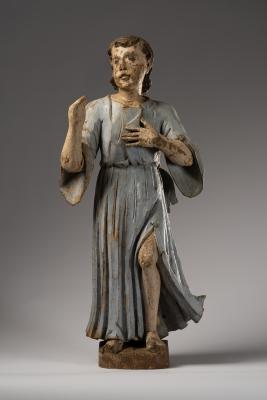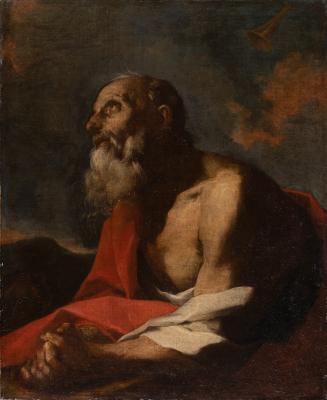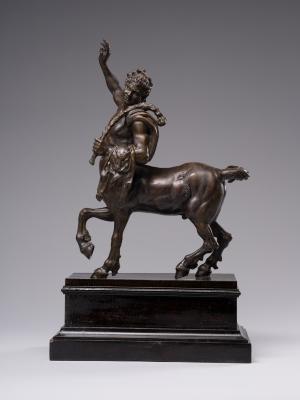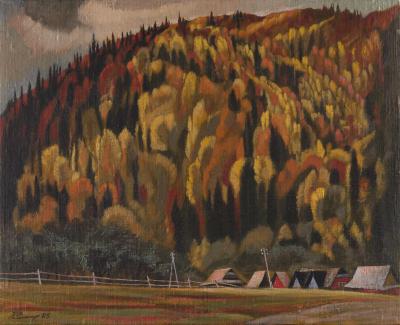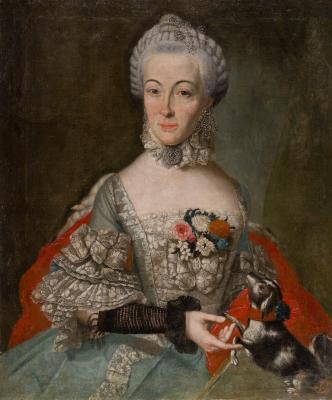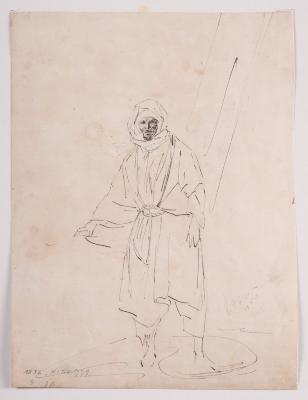This work is from the series Costumes of Central Italy in the Neapolitan album. The first watercolour engraving with such a name was performed by B. Pinelli in 1815 and issued in the album Nuova Raccolta di Cinquanta Costumi Pittoreschi incisi all 'acquaforte da Bartolomeo Pinelli Romano, Nicola de Antoni impresse, Ignazio Pavon Offre e Dedica, Roma 1816. The first version differs from the Lviv version performed a year later by greater detailing in the depiction of figures and a fragment of an architectural building. The second version, similar to the Lviv one, was published in black and white in the album dated 1817. In the foreground, one can see a rider with a pointed wooden stick. A woman with a baby is standing next to him. She has just given the man something like a small square box. The rider and the woman made a goodbye eye contact. A man (buttaro) is going to protect his area – Campania – from bandits and vagrants. He is sitting on the blanket of a harnessed horse, putting his foot in a stirrup. The man is dressed in a blue jacket over a red vest and blue trousers girded with a wide yellow belt. A wide-brimmed hat is on his head, and high boots are on his feet. A woman is wearing a long pink skirt and blue vest; on her head is a white headscarf. The baby in her arms is tightly swaddled. The rich range of colours of the clothing, namely red, blue, yellow and pink tones, highlight the images. The background with trees, mountains, and the sky is depicted in a dimmed blue and green range.
Campania is an area in the mountainous region of the province of Salerno in the Campania region, which includes Naples.










